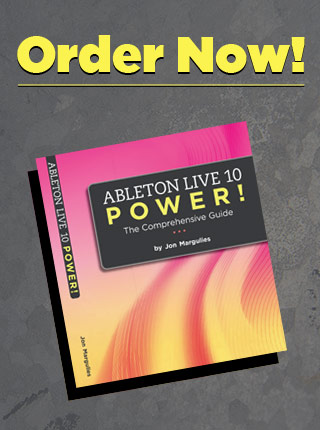If you’ve followed all the steps up until this point, you’re now ready to actually get down to warping. You’ll notice that I’ve placed quite a few steps before getting into warp markers or transients or anything that people think of as actual warping technology. That’s because, for many types of music, that’s the easy part – provided you’ve taken my suggested steps before getting into it. The technology is simple, the concepts are occasionally difficult, especially if you don’t have an extensive musical background.
In the final analysis, “warping” your tracks is just a fancy way of saying that you’re telling Live the original tempo that a piece of audio was recorded at. Once Live knows that, it can work its magic to keep the audio synchronized to the master tempo. Imagine you’re the brain of Ableton Live: If the song is originally 80bpm and you want to play it at 160bpm, the math is simple. Play it at twice the speed. If you want to play it at 120bpm, play it at 150% of its original speed, and so on. The key piece of information is the original tempo.
Sometimes, original tempo is a simple concept, sometimes it’s a more complex one. In the case of a piece of electronic music created and distributed digitally, it’s usually pretty simple. If the piece starts at 80bpm, it remains at exactly that tempo from start to finish. If it’s the same piece of music with a completely steady tempo, but it’s been recorded into Live from vinyl, its gets a little more complicated because a slight fluctuation in the turntable speed will introduce a tempo variation that needs to be accounted for. If it’s a piece of music performed by live musicians without a click track, it gets considerably more complicated because a song counted off at 80bpm will fluctuate from bar to bar: 79.6bpm one bar, 80.2 the next and so on.
Tempo fluctuations are accounted for using warp markers. So, here’s the first key concept: the steadier a tempo a song has, the fewer warp markers you will use. A digitally distributed dance track can usually be done with just one:
…while music performed live can require that you use many:





